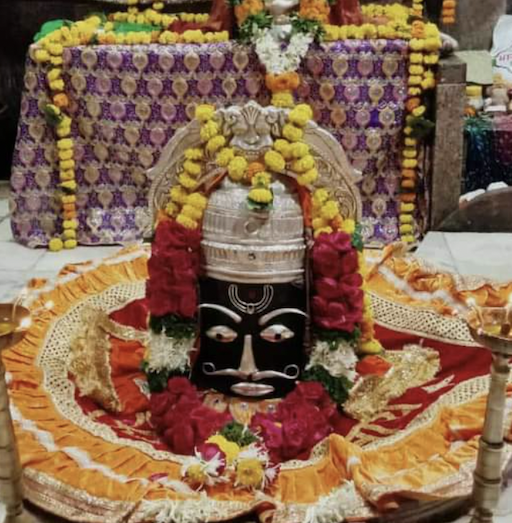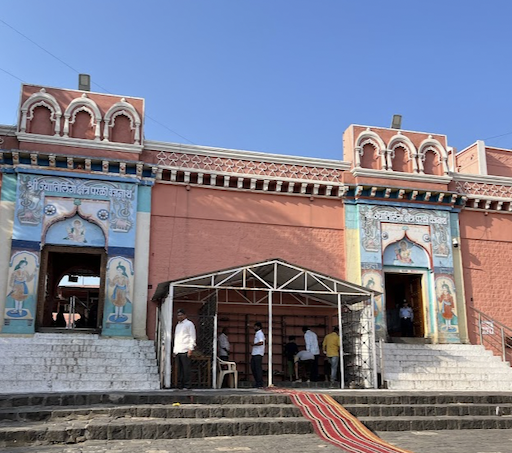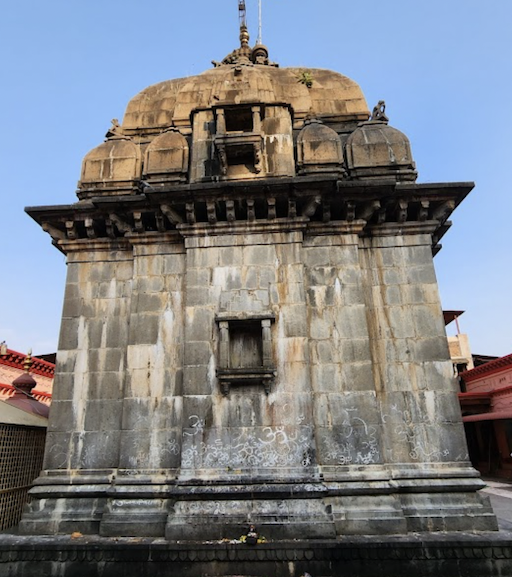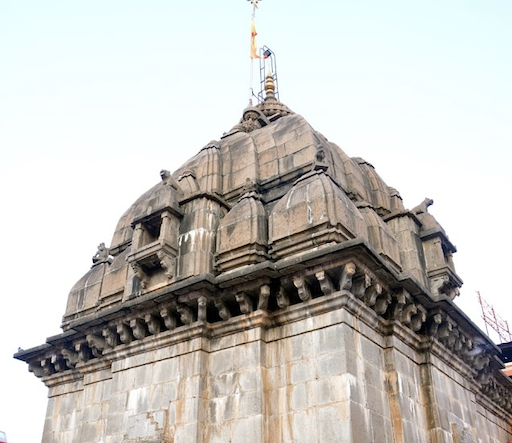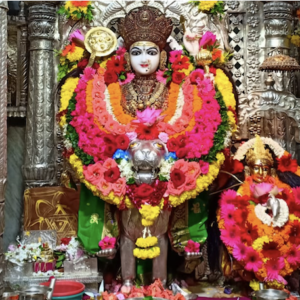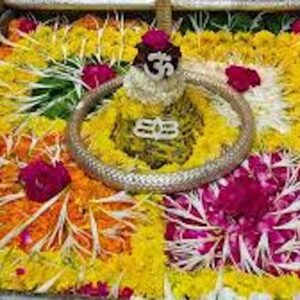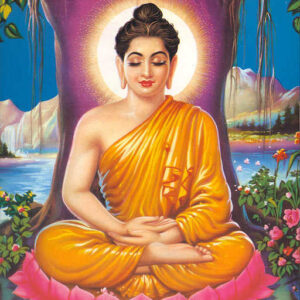This is one of the Jyotirlinga.
You can make offerings and go in close proximity of the linga. There is a place to sit and meditate. You can go into meditative states here effortlessly.
How to Get There:
The temple is located in the town of Parli.
Map:
https://maps.app.goo.gl/Nfq3y3bpL2G4tGCx8
About Parli Vaijnath
Parli Vaijnath Jyotirlinga, one of the twelve sacred Jyotirlingas in Hinduism, holds a significant place in the religious and cultural landscape of India. Located in the Beed district of Maharashtra, this ancient temple is dedicated to Lord Shiva, and it is believed to be associated with many legends and myths. The history of Parli Vaijnath Jyotirlinga spans centuries, reflecting the rich tapestry of Hindu spirituality and devotion. In this article, we will delve into the origins, mythology, historical significance, and the contemporary relevance of this sacred site.
The Origin of the Jyotirlinga
The word “Jyotirlinga” is a combination of two Sanskrit words – “Jyoti” and “Linga.” “Jyoti” means light or radiance, while “Linga” is a symbol or an icon representing Lord Shiva. A Jyotirlinga, therefore, is a radiant symbol of Lord Shiva. These twelve Jyotirlingas are considered to be self-manifested, and each of them represents the Lord in his unique form.
The legend of Parli Vaijnath Jyotirlinga traces its origins to a story from the ancient Hindu scripture, the Shiva Purana. The legend tells of a demon named Ravana, who was a devout devotee of Lord Shiva. He performed intense penance to please Lord Shiva and obtain a divine boon. Pleased with Ravana’s devotion, Lord Shiva granted him the boon but with a condition that the Lingam should not be placed on the ground until Ravana reached his destination.
Ravana, while returning to Lanka with the Lingam, felt the urge to answer the call of nature. He met a Brahmin named Kukkutya, who offered to hold the Lingam for him. Ravana agreed but warned Kukkutya not to place the Lingam on the ground under any circumstances. As fate would have it, Kukkutya couldn’t bear the weight of the Lingam for long and placed it on the ground.
When Ravana returned, he found that the Lingam had already been grounded. He tried to uproot it, but it wouldn’t budge. Furious, he started attacking the Lingam, breaking it into several pieces. These pieces are believed to have fallen in different parts of India, each becoming a sacred Jyotirlinga. Parli Vaijnath Jyotirlinga is believed to be where one of the pieces of the Lingam fell, radiating the divine light of Lord Shiva.
Historical Significance
Parli Vaijnath Jyotirlinga is steeped in history, and its significance can be traced back to ancient times. The temple complex, surrounded by lush greenery, is a marvelous architectural marvel that reflects the rich cultural heritage of the region.
One of the most notable historical records related to this temple comes from the travel accounts of Chinese traveler and Buddhist scholar, Xuanzang. He visited Parli during his travels in India in the 7th century. His writings describe the temple, its rituals, and the cultural vibrancy surrounding it.
Over the centuries, Parli Vaijnath Jyotirlinga has been patronized and renovated by various dynasties and rulers. The temple complex as it stands today is a result of these restorations and improvements. The Chalukya dynasty, the Yadava dynasty, and the Bhonsle dynasty were among the major contributors to the temple’s preservation and development.
The architectural style of the temple has evolved over the centuries, blending various regional influences. The temple showcases an intricate blend of Hemadpanthi and Indo-Aryan architectural styles. Its unique design includes a spacious courtyard, a majestic entrance gate, and a sanctum sanctorum where the Jyotirlinga is enshrined. The presence of ornate carvings and sculptures adds to the temple’s aesthetic appeal.
Religious Significance
Parli Vaijnath Jyotirlinga holds immense religious significance for Hindus, particularly devotees of Lord Shiva. The Jyotirlinga is believed to be a powerful manifestation of Lord Shiva, who is considered the Supreme Being in Shaivism, one of the major branches of Hinduism.
The Lingam at Parli Vaijnath is revered as a source of divine energy and a symbol of Shiva’s omnipresence. Devotees visit the temple to seek the blessings of Lord Shiva and to offer their prayers and offerings. The temple’s serene ambiance and the presence of the Jyotirlinga create a spiritual atmosphere that attracts pilgrims from all over India.
The temple is an essential stop on the pilgrimage route of the twelve Jyotirlingas, known as the Dwadasha Jyotirlinga Yatra. This sacred journey takes devotees to all twelve Jyotirlingas, including Parli Vaijnath, and is considered a means of achieving spiritual enlightenment and divine grace.
